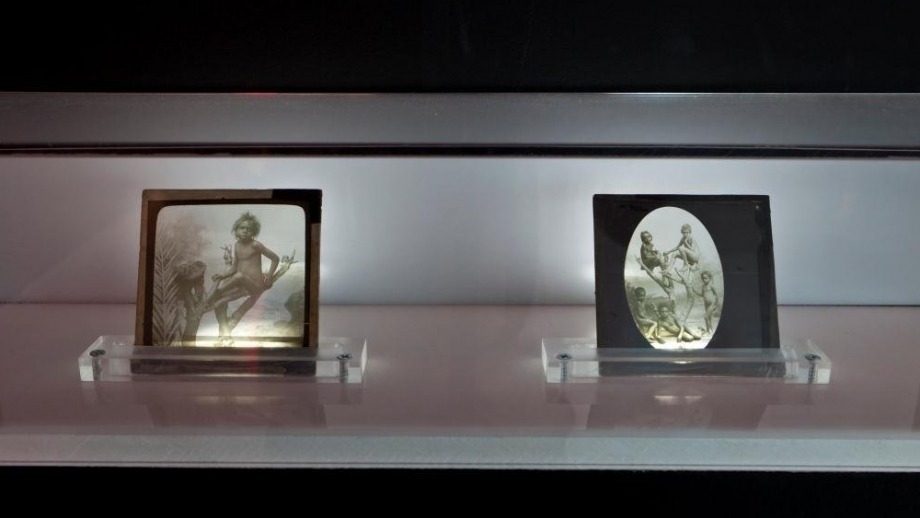'I first held a lantern slide in my hand in 1996' - Discussion by contemporary artist, Brook Andrew

Contemporary artist Brook Andrew incorporates actual magic lantern slides into his large-scale installations. He also uses magic lantern slide imagery in some of his two dimensional work. His most recent major Australian exhibition was The Right To Offend is Sacred, at the National Gallery of Victoria from 3 March to 4 June 2017. He is Lead Investigator on the Monash University Australian Research Council project Representation, Remembrance and the Monument that is interrogating the potential for memorials to become powerful public spaces where the history of the Frontier Wars can be addressed. He answered Martyn Jolly’s questions about his personal relationship to lantern slides.
“I first held a magic lantern slide in my hand in 1996 at the Royal Albert Memorial Museum, Exeter. I was preparing for my first installation at a museum in Europe. It was a slide of an Aboriginal skull and I was shocked, I hadn’t realized until then the extent of the human remains trade and the teaching facilities that supported it. (Chief Investigator Joe Kember, from the University of Exeter, is currently conducting research on the large collection of lantern slides at Exeter’s Royal Albert Memorial Museum).
"In 2010 I acquired the first magic lantern slides for my archive, scenes in Western Victoria and Melbourne, which I bought from a second hand shop in Melbourne. The pristine water in the bushland scenes and the nineteenth century fashion in the street scenes fascinated me. I first included magic lantern slides in my installation for TABOO at the Museum of Contemporary Art in 2012. They were images of Aboriginal children placed on fake tree branches. I presume they were made to show an anthropological view of the Aboriginal child on the 'ape' scale between ape and human. They shocked, but didn’t surprise me. They showed yet more evidence of the social and scientific practices of primitivism and racism in Australia.
I have mixed thoughts about one slide, of a Native Policeman on a horseback, which I bought from a rare book dealer in Australia. The slide almost put me in a trance because it shows palpable photographic evidence of the complex stories of Native Policemen, and the way they hunted other Aboriginal people.
I am most intrigued by a slide I have never actually seen, but someone` told me about in London. I was told by a student of the Royal College of Surgeons that in the early 1980's he was shown old lantern slides of Aboriginal massacred bodies with British soldiers standing by. He said it reminded him of a hunting expedition in Africa.”
*****











